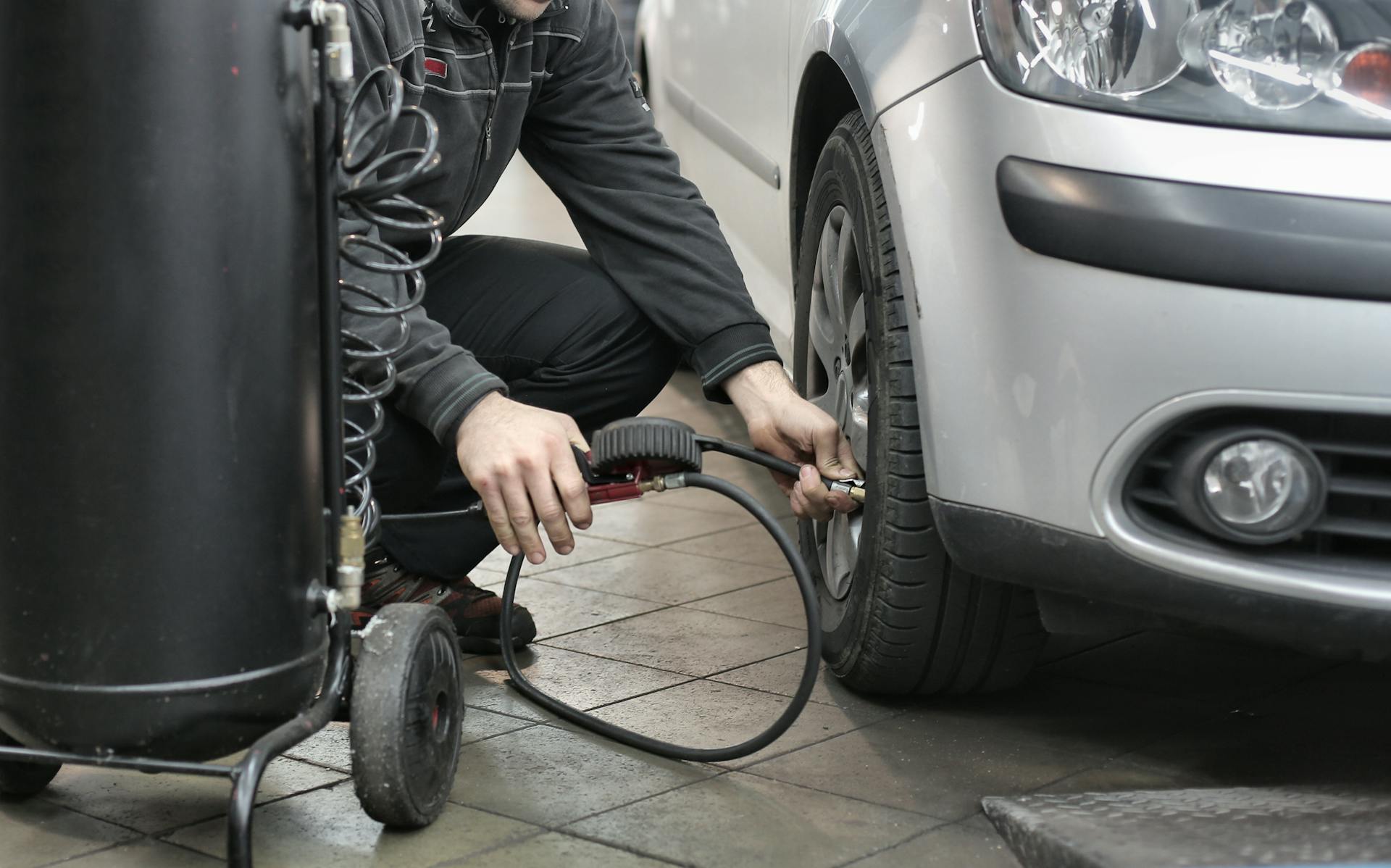Have you ever seen a bubble in your tyre? This is known as a tyre bulge. It appears as a swelling or bulge, usually on the tyre sidewall. Initially, these bulges may be almost invisible, but they become more noticeable and concerning the longer you drive on them. Therefore, it is critical to respond as soon as you see a tyre bulge.
What is a tyre bulge?
A tyre bulge is a visible deformation on the tyre sidewall, appearing as a bubble or blister. This occurs when the internal structure of the tyre, such as the cords or plies, is damaged, causing the outer layer to protrude. This defect indicates significant internal damage and can lead to tyre failure if not addressed promptly.
What causes a tyre bulge?
 Tyre bulges are frequently caused by impact breaks, which damage the tyre’s casing. Hitting potholes, curbs, or debris on the road can break the tyre’s internal layers, leading to a bulge.
Tyre bulges are frequently caused by impact breaks, which damage the tyre’s casing. Hitting potholes, curbs, or debris on the road can break the tyre’s internal layers, leading to a bulge.
However, other types of tyre damage can also cause tyre bubbles:
Manufacturing Defects: Occasionally, tyres may have defects from the manufacturing process that predispose them to bulge.
Prolonged Underinflation: Consistently driving with underinflated tyres weakens their structure, increasing the likelihood of bulges forming.
Uneven Wear: Uneven tyre tread wear can create weak spots that are more susceptible to bulging.
Overinflation: Excessive internal air pressure can cause more centerwear, making it more prone to bulging.
Are tyre bulges dangerous?
Yes, a tyre bulge is dangerous as it indicates a weakened tyre structure, which can lead to a sudden blowout. This damage may look minor, but ignoring a tyre bulge can lead to severe consequences such as:
- Tyre Blowouts: The most immediate risk of a tyre bulge is a sudden blowout, which can occur without warning.
- Loss of Vehicle Control: A blowout or even a significant bulge can cause the driver to lose control of the vehicle, especially at high speeds.
- Potential Accidents and Injuries: The risk of accidents and injuries increases significantly with a bulged tyre, as it compromises the vehicle’s safety.
At high speeds, a tyre blowout can cause significant damage to the vehicle and potentially lead to fatal accidents. It is extremely dangerous to drive with a bulged tyre, and it should be replaced immediately to ensure your safety and that of others on the road.
Emergency solutions after hard impacts leading to a tyre bubble
If you find yourself with a tyre bulge, it is crucial to act swiftly to ensure your safety on the road. Here are some effective emergency solutions:
- Stay Calm: Remain calm and firmly grasp the steering wheel to maintain control of the vehicle.
- Pull Over: Signal and drive slowly to a safe place to pull over and stop. Avoid sudden movements or hard braking.
- Use a Spare Tyre: If you have a spare tyre, replace the bulged tyre immediately. Ensure you have the necessary tools and know how to change a tyre safely.
- Roadside Assistance: Contact roadside assistance services, your insurance company, or highway emergency numbers for immediate help if you cannot replace the tyre yourself.
Having tools and a spare tire in your car can be extremely helpful in the event of a bulged tyre or other roadside emergencies. Replacing a bubbled tyre with a spare allows you to resume driving safely without waiting for a tow vehicle.
Other common types of tyre damage
Several common types of tyre damage can lead to a bulge, including:
- Impact Breaks: Caused by hitting potholes, curbs, or debris, leading to cord damage and subsequent bulging.
- Sharp Objects: Nails, glass, or other sharp objects can penetrate the tyre’s internal structure, causing internal air pressure issues, and likely resulting in bulging.
- Overloading: An overloaded vehicle can cause excessive strain on the tyres, leading to premature wear and the formation of tyre bubbles.
Prevention is key
Regularly check your tyres for any signs of damage or bulging. Maintain the correct tyre pressure as per the manufacturer’s recommendations and avoid driving with under-inflated tyres. Additionally, drive carefully to avoid potholes, curbs, and other road hazards that can cause damage.
Proper wheel alignment and regular maintenance of shock absorbers also help prevent tyre issues. Furthermore, investing in quality tyres and understanding the tyre warranty can save you from unexpected costs and ensure your safety.
Replace tyre bulge with Yokohama Tyres
Tyre bulges are a serious safety concern that should not be ignored. Regular inspections, proper inflation, and careful driving can prevent tyre bulges and ensure your safety on the road. The best solution to a tyre bulge is replacing it with a new one, as fixing it cannot guarantee safety.
Yokohama Tyres offers cutting-edge technology to ensure maximum performance and safety for your vehicle. Our tyres are built to last, providing long-term value for your investment, with enhanced safety features to keep you and your passengers safe on the road.
For the best performance and safety, consider the following Yokohama Tyre models:
- ADVAN Series: High-performance, race-inspired tyres.
- GEOLANDAR Series: Engineered for off-road vehicles.
- BluEarth Series: Designed for fuel efficiency and reducing environmental impact.
FAQ
Can I continue driving with a bubbled tyre?
No, driving with a tyre bulge in the sidewall is dangerous as it indicates a damaged tyre structure. Although driving at low speeds might not cause immediate problems, it significantly increases the risk of a sudden blowout and loss of vehicle control. For safety, replace a bulged tyre immediately.
What causes tyres to bulge?
Tyres can bulge due to impact breaks from hitting obstacles like bumps or curbs, overinflation, underinflation, uneven wear, and manufacturing defects.
Can a tyre bulge be fixed?
We highly recommend replacing the damaged tyre with a new one as a tyre bulge cannot be fixed.


